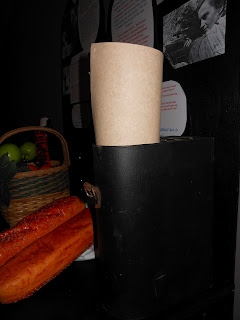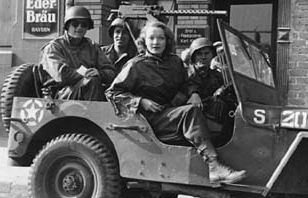Cinthia, Mariah, and Victor
Janet Kelly’s email took me by surprise. Kelly is a middle school teacher who coached a three-student team through an impressive History Day project, using my book as the foundation. Of the 26 women featured in Women Heroes of WWII, Ms. Kelly's students decided to focus on Josephine Baker, Irene Gut, Nancy Wake, and Sophie Scholl. “They have cut out four women's silhouettes out of wood, and put them together like a jigsaw puzzle” Kelly told me. “The pieces stand up when they are put together, but fall down if they are apart. They wanted to demonstrate that these women, and all the others like them, had accomplished much as individuals, yet the real power is what they did together as a collective whole.” She went on to explain that the kids knew nothing about WWII before beginning the project. “One of them told me that WWII was fought so girls could wear Levis to school” Kelly said. The following questions they sent to me via their teacher proved that they’d learned something during the project:
“How important were the resistance groups to the war effort?”
“Why would the Nazis have treated Sophie so badly?”
“What do you think would have happened if the Nazis would have won the war?”
“Do you think we are on the right track with how the exhibit is put together?”
“Were there reforms in Europe that happened because of the Allies winning the war?”
“Do you think the artifacts are a good idea?”
I won't take up space here with my answers because because the point of this post is to exhibit the impressive amount of thinking that was stirred in these students. I’ve had many inspiring moments since I commenced the writing of Women Heroes but I’d say that my correspondence with Janet Kellly will always be very close to the top. Here are her final comments: “You have had a major impact on these kids. I think your book is beyond inspiring...what a legacy to leave future generations. I think the way it is written and illustrated make the information easily accessible and memorable. I plan to keep it in my library, and will eventually donate it to the school library. Thanks again for your willingness to help us.”
There was a spot for "artifacts": food representing Irene Gut . . .
A suitcase representing Sophie Scholl . . .
And tap shoes representing Josephine Baker.
I had to include this -- I've never been quoted in a school project before. :)
Great job, kids!!









